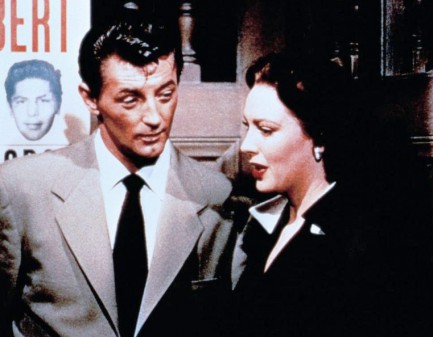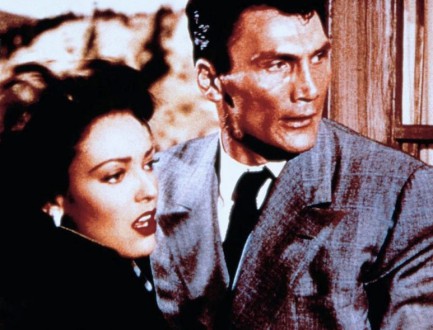| Hollywoodland | Mar 21 2024 |

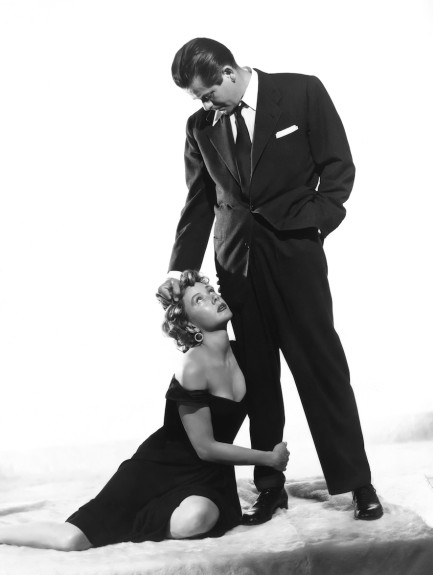
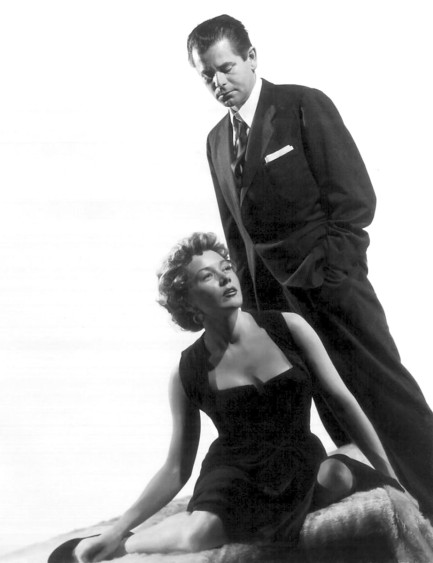
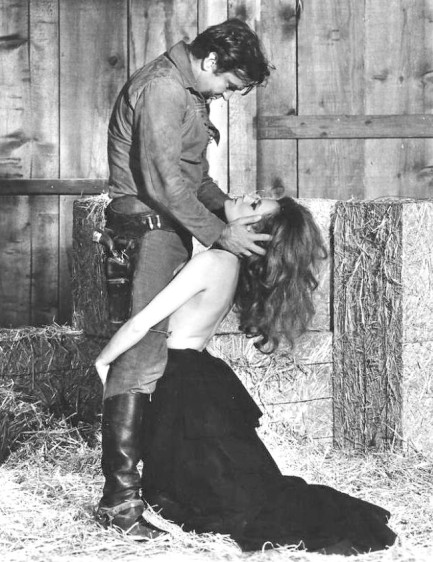
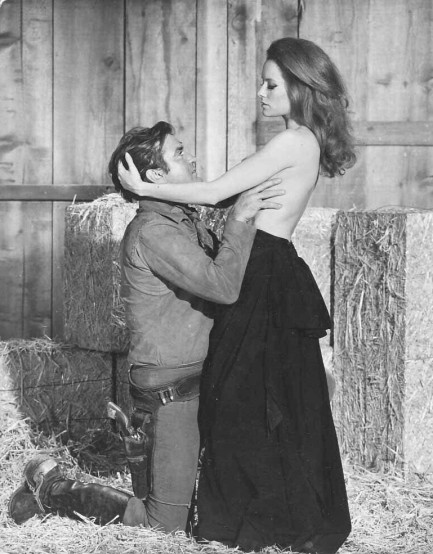 Rod Taylor and Luciana Pauluzzi swap subordinate positions for 1967's Chuka.
Rod Taylor and Luciana Pauluzzi swap subordinate positions for 1967's Chuka.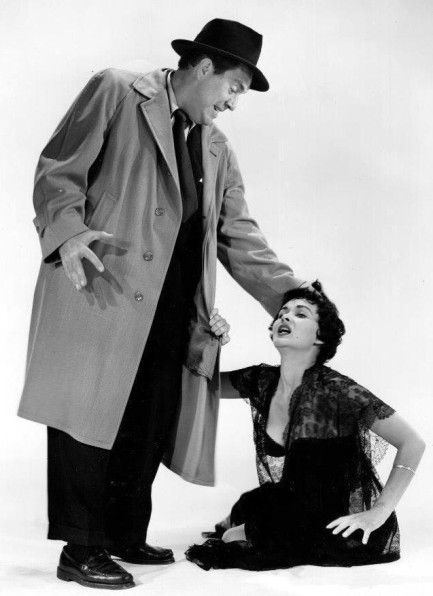 Edmund O'Brien goes for the time honored hair grab on Marla English for 1954's Shield for Murder.
Edmund O'Brien goes for the time honored hair grab on Marla English for 1954's Shield for Murder.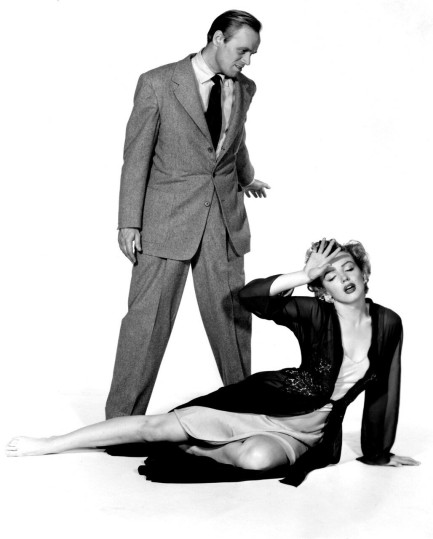 Marilyn Monroe swoons as Richard Widmark snarls for Don't Bother To Knock, 1952.
Marilyn Monroe swoons as Richard Widmark snarls for Don't Bother To Knock, 1952. Inger Stevens and Terry Ann Ross for Cry Terror, an adaptation of a novel we talked about a few years ago.
Inger Stevens and Terry Ann Ross for Cry Terror, an adaptation of a novel we talked about a few years ago.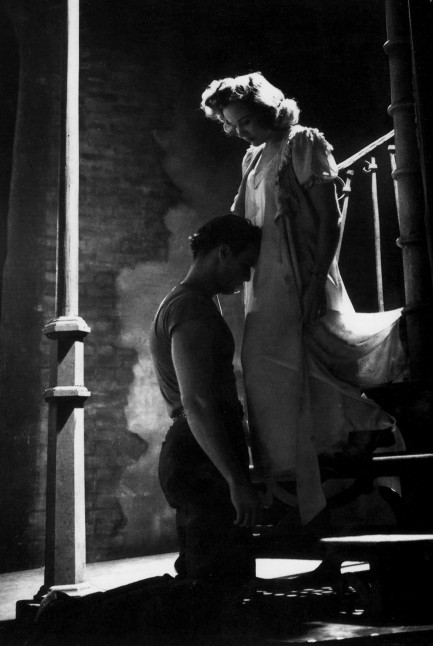 Kim Hunter soothes an overheated Marlon Brando in a promo for 1951's A Streetcar Named Desire.
Kim Hunter soothes an overheated Marlon Brando in a promo for 1951's A Streetcar Named Desire.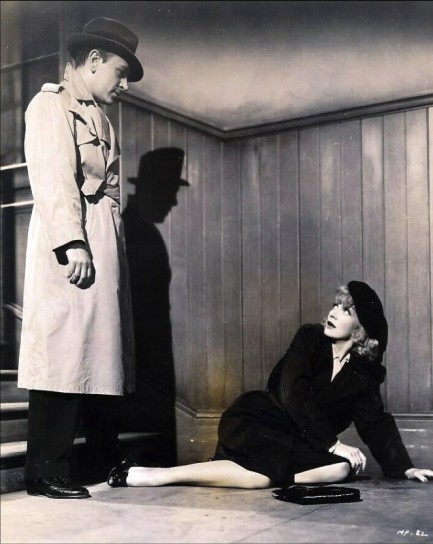 George Raft menaces Marlene Dietrich in the 1941 comedy Manpower.
George Raft menaces Marlene Dietrich in the 1941 comedy Manpower.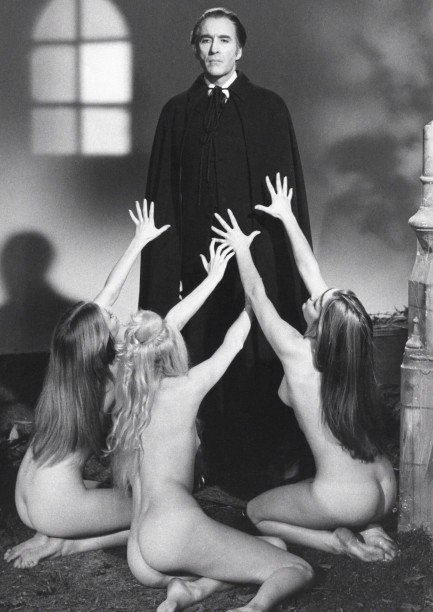
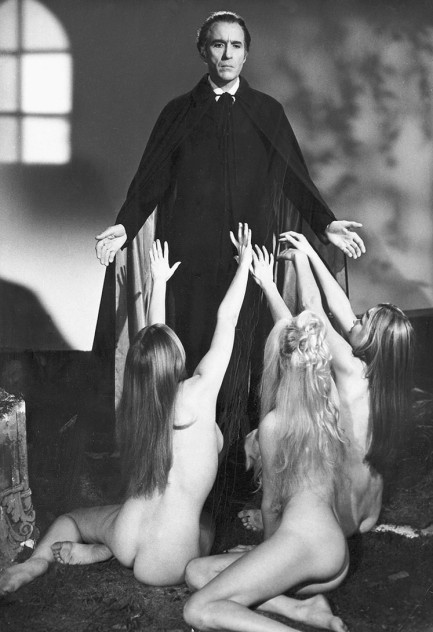 As promos go, these actually make sense. They show three unidentified models mesmerized by vampire Christopher Lee for 1970's Taste the Blood of Dracula.
As promos go, these actually make sense. They show three unidentified models mesmerized by vampire Christopher Lee for 1970's Taste the Blood of Dracula. Glenn Ford is at it again, this time looming over Rita Hayworth for the 1946 classic Gilda.
Glenn Ford is at it again, this time looming over Rita Hayworth for the 1946 classic Gilda.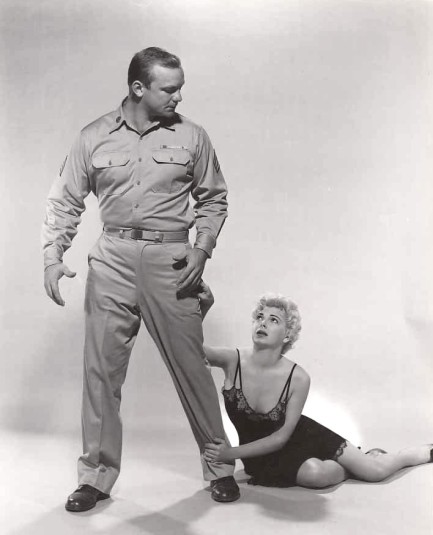 Aldo Ray and Barbara Nichols for 1958's The Naked and the Dead.
Aldo Ray and Barbara Nichols for 1958's The Naked and the Dead.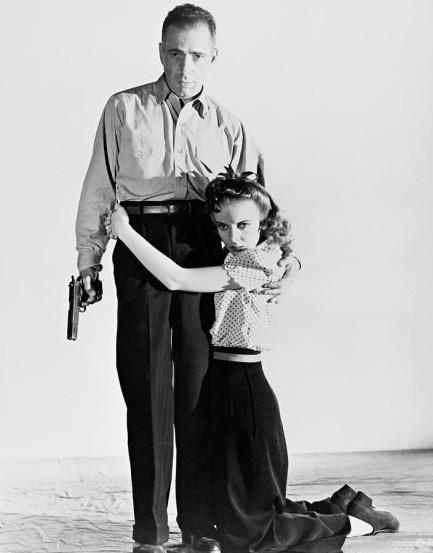 This one shows less domination and more protectiveness, as Humphrey Bogart prepares to defend Ida Lupino for High Sierra, 1941.
This one shows less domination and more protectiveness, as Humphrey Bogart prepares to defend Ida Lupino for High Sierra, 1941.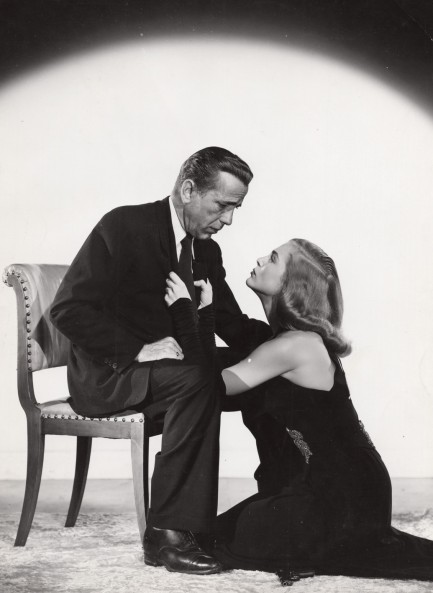 Humphrey once more. Here he's with Lizabeth Scott for Dead Reckoning, 1947.
Humphrey once more. Here he's with Lizabeth Scott for Dead Reckoning, 1947.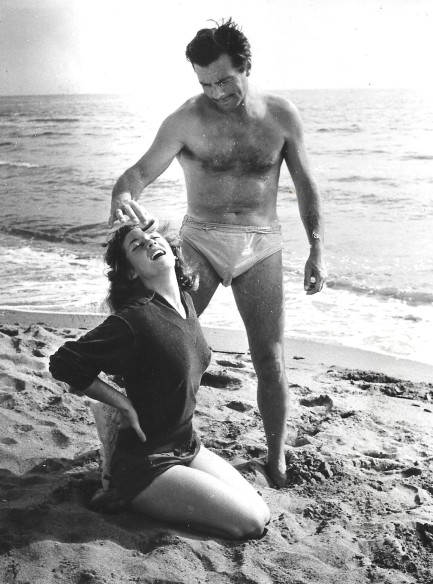 This shot shows Brazilian actress Fiorella Mari with an actor we can't identify in a movie we also can't identify.
This shot shows Brazilian actress Fiorella Mari with an actor we can't identify in a movie we also can't identify.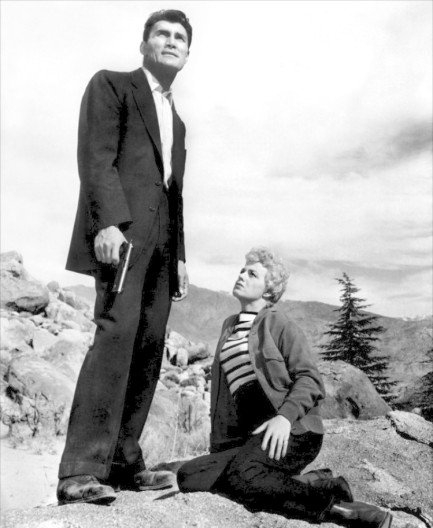 Shelly Winters and Jack Palance climb the highest mountain together for I Died a Thousand Times, 1955.
Shelly Winters and Jack Palance climb the highest mountain together for I Died a Thousand Times, 1955.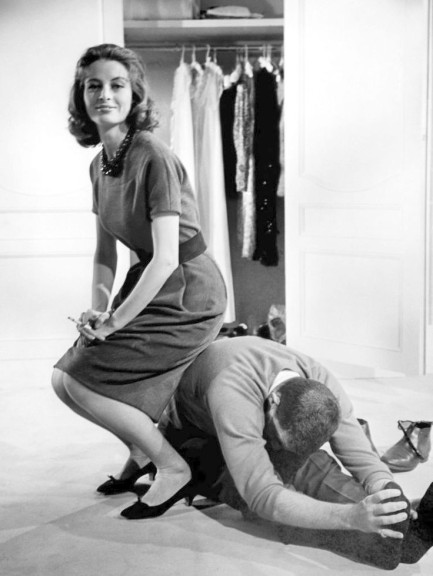 As we said, we didn't find as many examples of kneeling men, but we found this gem—Cappucine makes a seat of director Blake Edwards on the set of The Pink Panther in 1963. Does this count, though? While Edwards is subordinate, he isn't kneeling and it really isn’t a legit promo.
As we said, we didn't find as many examples of kneeling men, but we found this gem—Cappucine makes a seat of director Blake Edwards on the set of The Pink Panther in 1963. Does this count, though? While Edwards is subordinate, he isn't kneeling and it really isn’t a legit promo.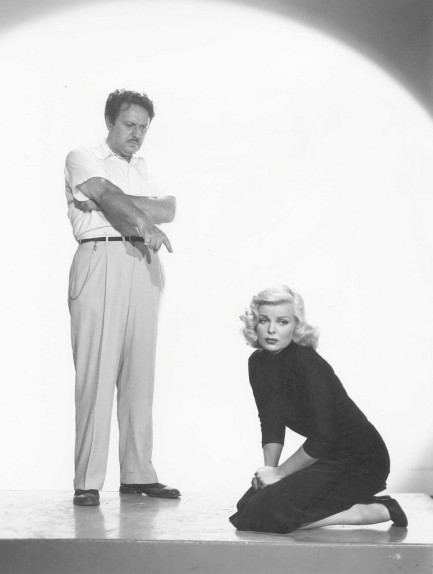 And lastly, in a curious example, Hugo Haas seems to tell Cleo Moore to stay in a shot made for 1953's One Girl's Confession.
And lastly, in a curious example, Hugo Haas seems to tell Cleo Moore to stay in a shot made for 1953's One Girl's Confession.
| Vintage Pulp | Apr 25 2023 |

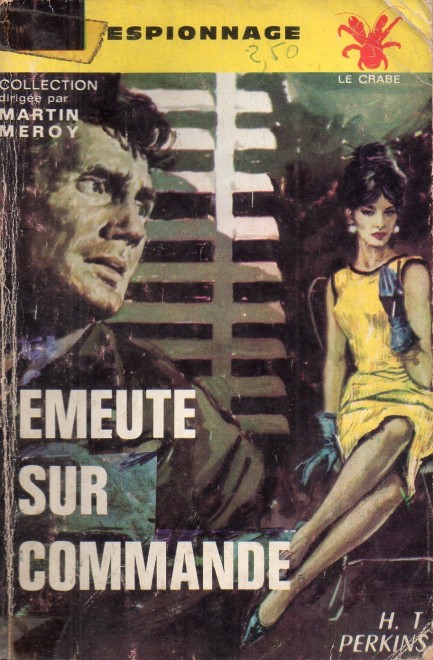
| Vintage Pulp | Nov 25 2018 |

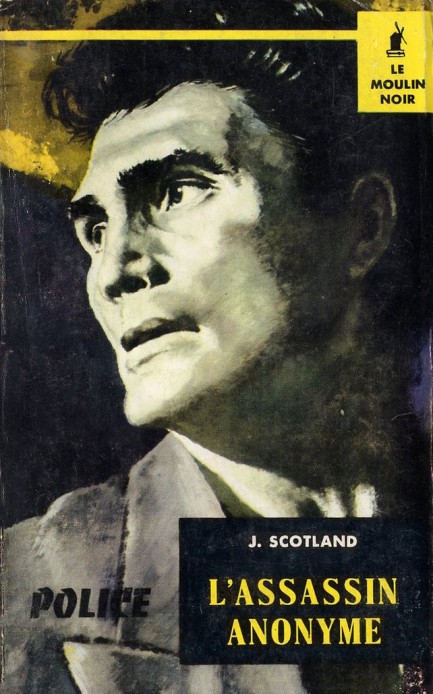
We did a double-take before reaching an inescapable conclusion—this is Jack Palance on the cover of the thriller L'assassin anonyme, published by the French group Éditions du Champ de Mars for its Collection Moulin Noir. After recognizing the face it was easy to find the photo you see below, a promo shot made for the 1950 movie Panic in the Streets. We thought the book might be a novelization of the film, but nope—it's straight up unlicensed usage of Palance's mug. The book was written by J. Scotland, which is of course a pseudonym, in this case for the prolific Viviane Cambon, who also wrote as Liane Méry, César Valentino, and—our definite favorites—Harry Mitchum and Mickey Spolane. Rumor has it she created or shared up to forty pen names. This effort is copyright 1959, and the art is uncredited. 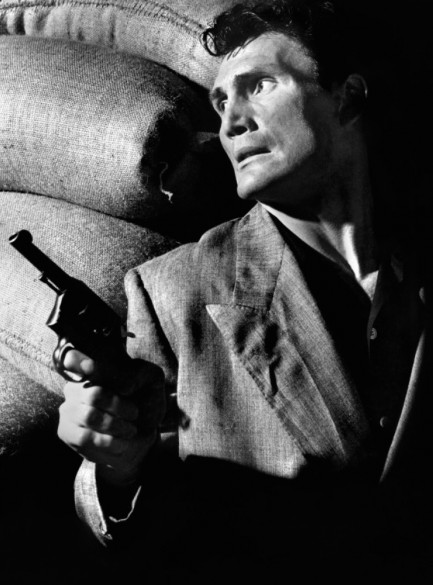
| Vintage Pulp | Jan 25 2017 |

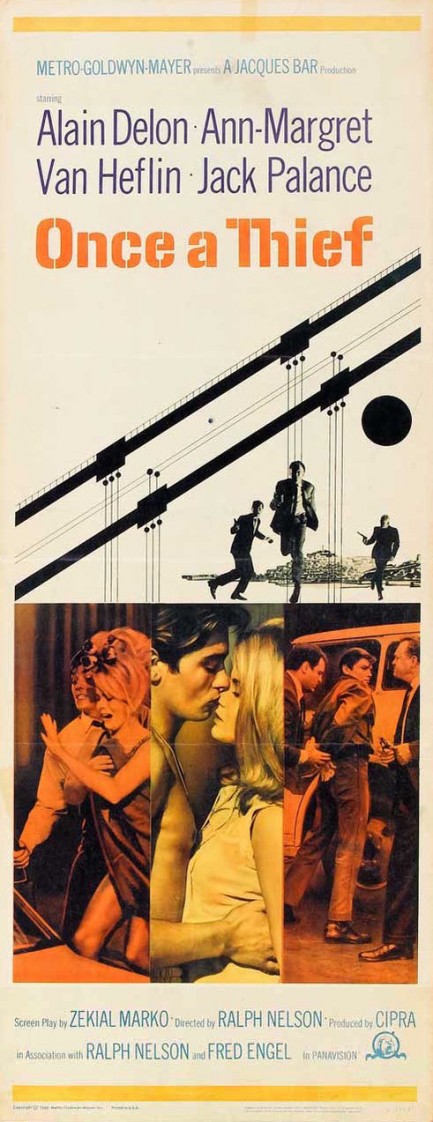
Once a Thief opens with a San Francisco nightclub drummer playing a cracking solo, cymbal crashes synched to quick edits, and we immediately think we're in for some sort of revolutionary beat generation noir, with the edgy rhythms and nervous energy that idea entails. But the movie quickly subsides to conventional pacing, telling the story of a former thief gone straight suspected of a recent murder, and the cop determined to put him away—guilty or innocent. Alain Delon plays crook-turned-family man Eddie, and Ann-Margret is his wife Kristine. Even if the movie doesn't live up to its jazzy opening, getting Sweden's hottest actress and France's hottest actor together should be a can't-miss proposition.
Once a Thief oozes cool, but in the end it's a middling heist drama that asks a bit too much of its principals. It didn't do well in 1965, and we suspect it'll be the least liked offering at Noir City. Audiences may respond to a few aspects, though: there are some nice San Fran exteriors, Lalo Schifrin's soundtrack is top notch, and character actor John Davis Chandler knocks his role of the druggy hepcat villain Jimmy Sargatanas out of the park, over the promenade, and into McCovey Cove. His line, “I don't dig women,” paired with a sneer and a fatal gunshot, will probably bring the house down. As for Delon and Ann-Margret, well, at least they look good.
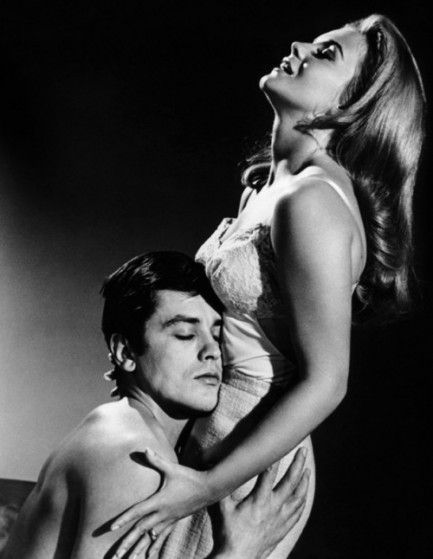
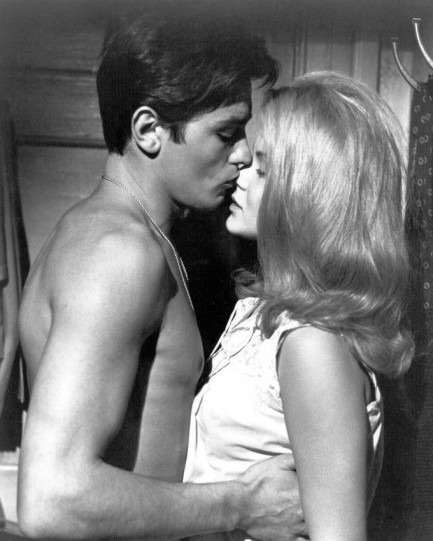
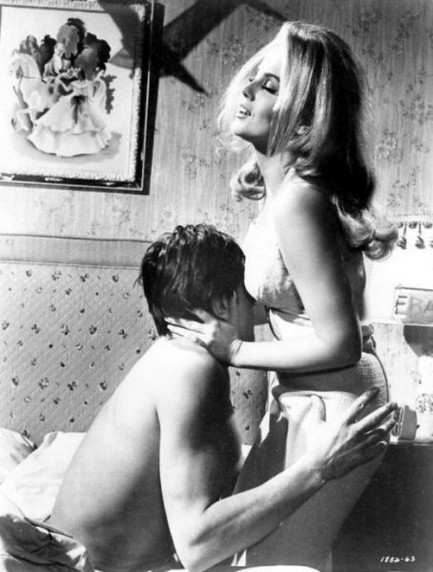
| Vintage Pulp | Jan 29 2016 |

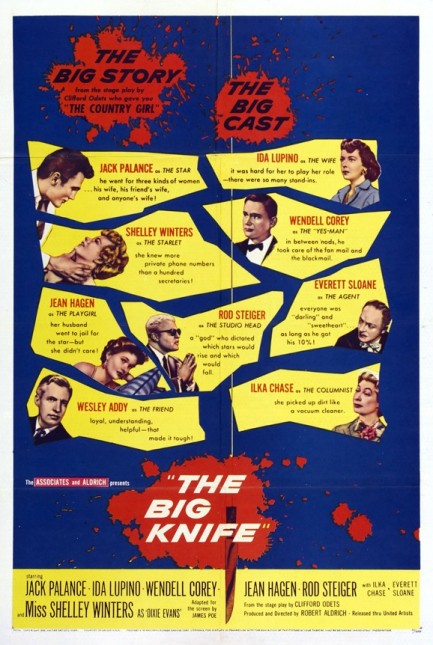
Above you see a poster for the 1955 drama The Big Knife, which, along with The Bad and the Beautiful, plays on tonight’s dark-side-of-Hollywood double bill at the Noir City Film Festival. Based on Clifford Odets’ play of the same name, The Big Knife tells the story of a star actor who wants to expand artistically, but is being tormented by his studio boss to ink a new deal locking him into more of the unfulfilling schlock that put him on the map. The studio has leverage because it helped the actor—played by Jack Palance—hide his role in causing a fatal car accident years ago. The studio boss—Rod Stieger, shamelessly hamming up the place (see photo below)—will stop at nothing, including blackmail, to get the contract signed. The stage-based origins of The Big Knife are clear, as the action rarely leaves one room and the dialogue is at times florid, but the question of whether Palance has the constitution to stand up to Stieger’s abuse offers some tension, and Ida Lupino as Palance’s wife helps elevate the exercise. Above average, we’d call this one, but we think festivalgoers will like The Bad and the Beautiful a lot better.
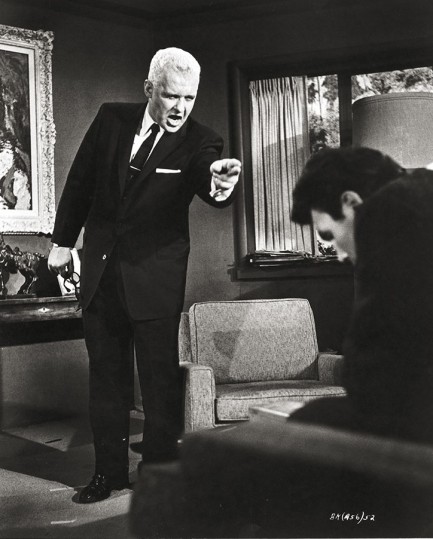
| Hollywoodland | Jan 17 2016 |

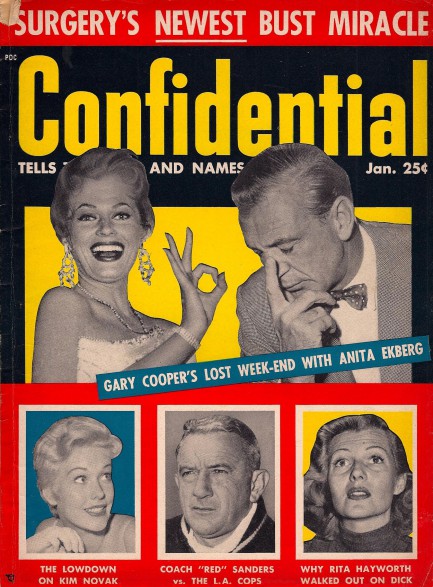

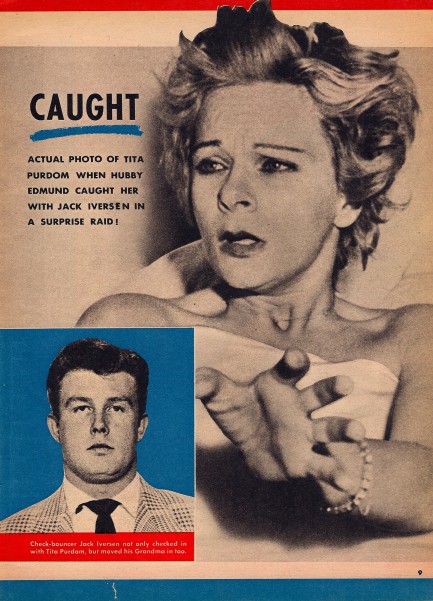
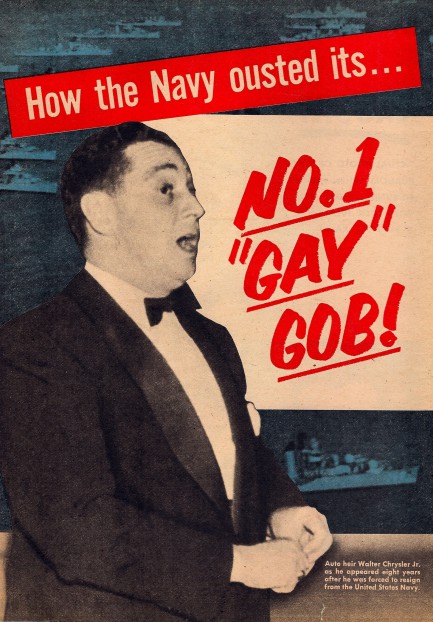
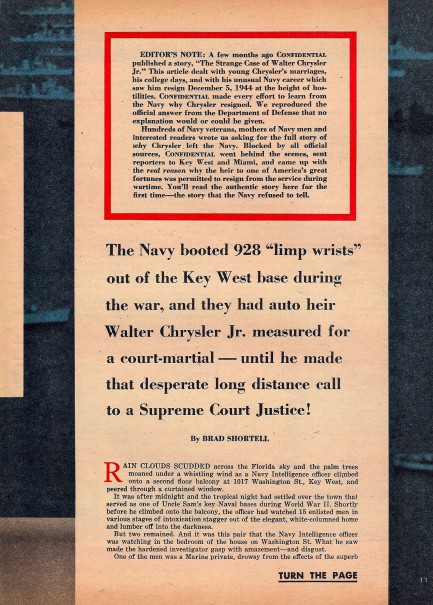 publisher Robert Harrison thought he was. First up is Rita Hayworth, who allegedly walked out on husband Dick Haymes because he beat her. Here's scribe Alfred Garvey: “Haymes' favorite form of assault was to grab Rita by her world-famed tresses and slam her head against a wall until her sense reeled. And the brutal beatings were part and parcel of their schedule wherever they went.” We should note here that Confidential was in no way a defender of women—the magazine published anything that made a celebrity look bad. It didn't publish this story to expose Haymes, but to expose Hayworth. She's the star—the reader must be left asking what's wrong with her.
publisher Robert Harrison thought he was. First up is Rita Hayworth, who allegedly walked out on husband Dick Haymes because he beat her. Here's scribe Alfred Garvey: “Haymes' favorite form of assault was to grab Rita by her world-famed tresses and slam her head against a wall until her sense reeled. And the brutal beatings were part and parcel of their schedule wherever they went.” We should note here that Confidential was in no way a defender of women—the magazine published anything that made a celebrity look bad. It didn't publish this story to expose Haymes, but to expose Hayworth. She's the star—the reader must be left asking what's wrong with her.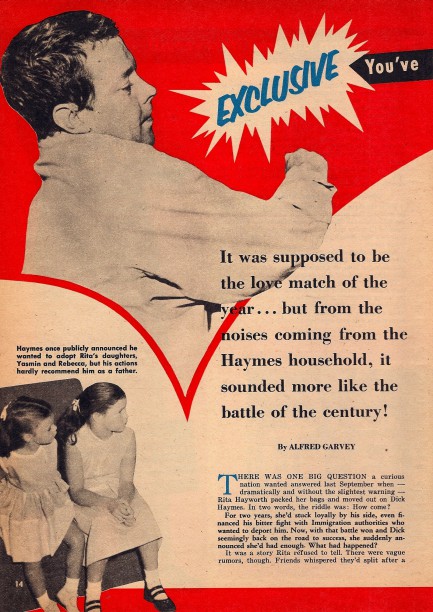
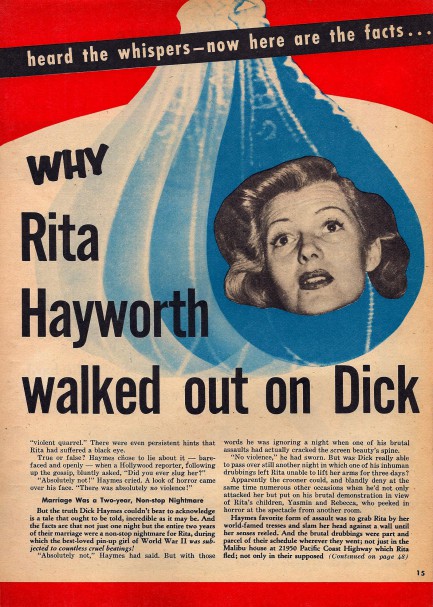
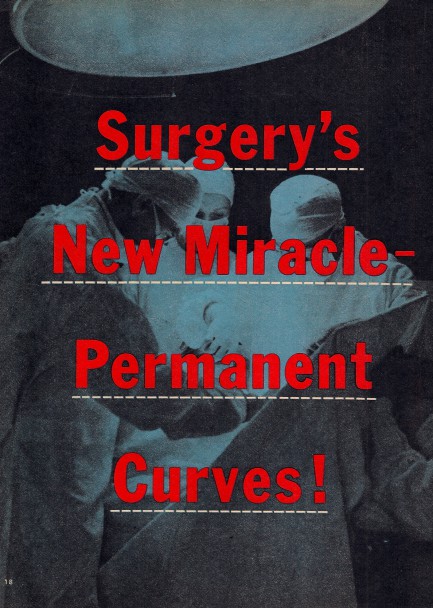
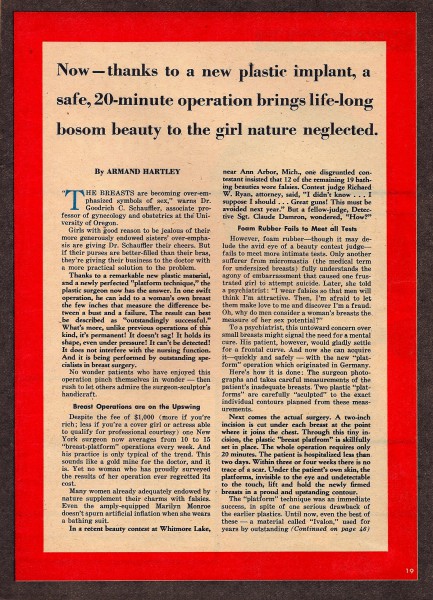 assault in first-hand detail, but even though the writer seems to know every word spoken in that closed room, he never names the victim. This is not because Confidential cares about protecting her identity—if editors can name Hayworth they certainly can name a random aspiring actress—but because she doesn't matter. Her identity would distract the reader.
assault in first-hand detail, but even though the writer seems to know every word spoken in that closed room, he never names the victim. This is not because Confidential cares about protecting her identity—if editors can name Hayworth they certainly can name a random aspiring actress—but because she doesn't matter. Her identity would distract the reader.As far as we know nobody mentioned in any these stories sued. Confidential was impervious—at least for the moment. Celebrities just hunkered down and hoped the stories would fade. But Confidential's
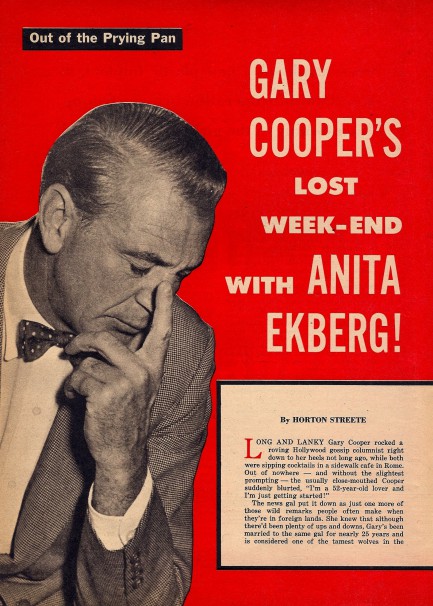
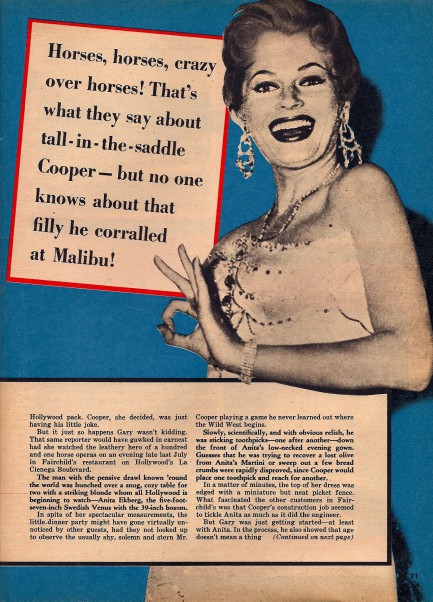
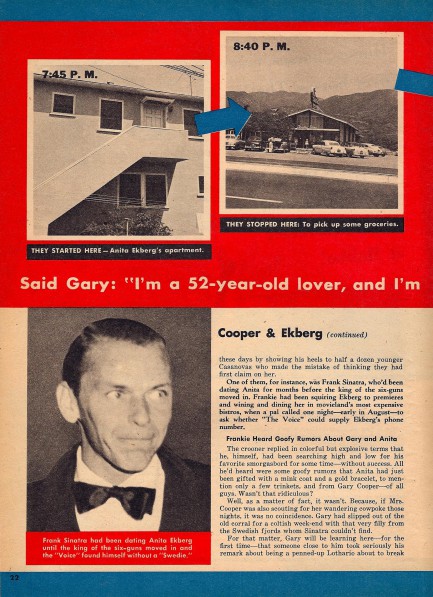
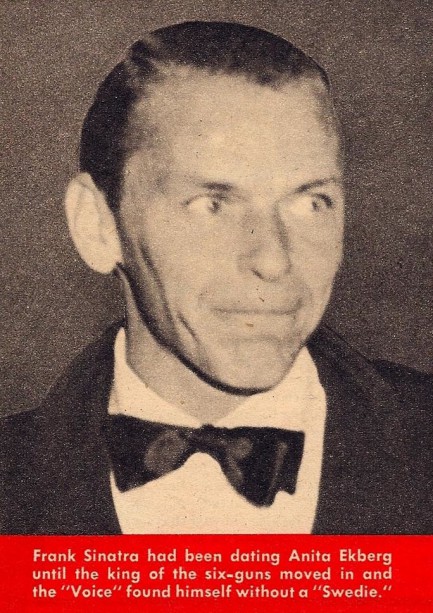
 circulation kept growing. Soon it would be one of the most widely read magazines in America, the indisputable king of tabloids. Hmm… king of tabloids has a nice ring to it. We’re going to use that—Pulp Intl. is the king of tabloid websites. You can work your way through more than three-hundred individual tabloid entries here.
circulation kept growing. Soon it would be one of the most widely read magazines in America, the indisputable king of tabloids. Hmm… king of tabloids has a nice ring to it. We’re going to use that—Pulp Intl. is the king of tabloid websites. You can work your way through more than three-hundred individual tabloid entries here.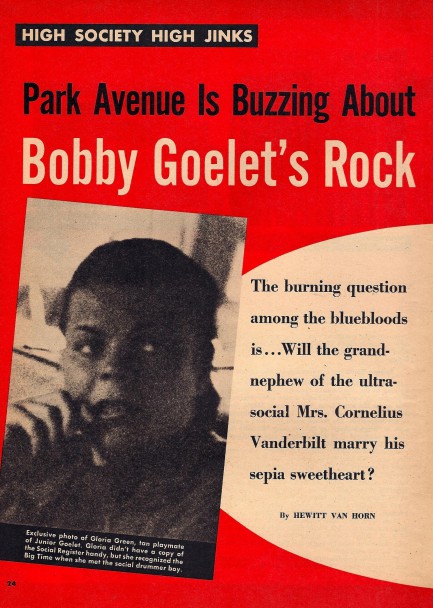
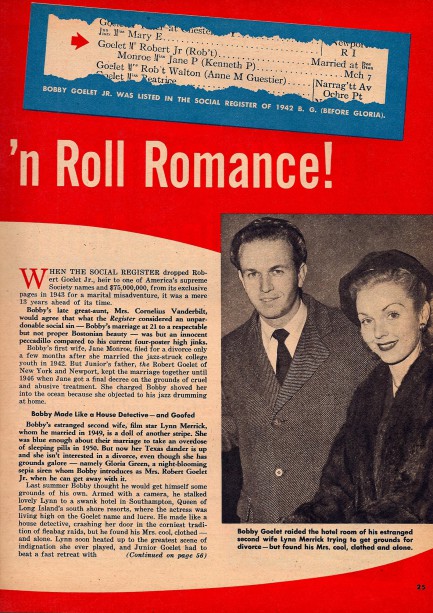
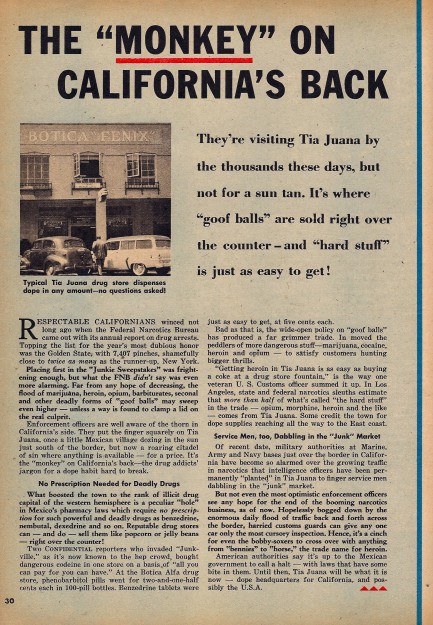
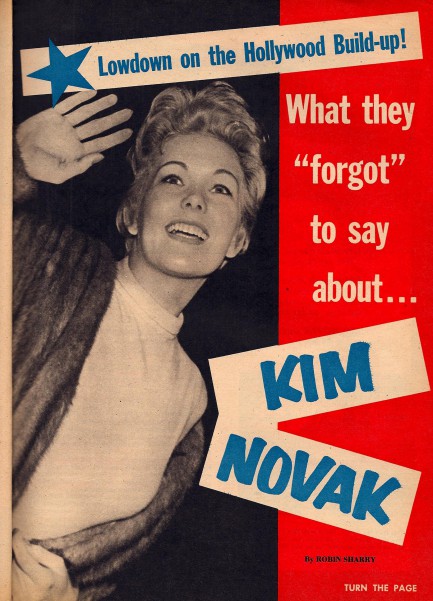
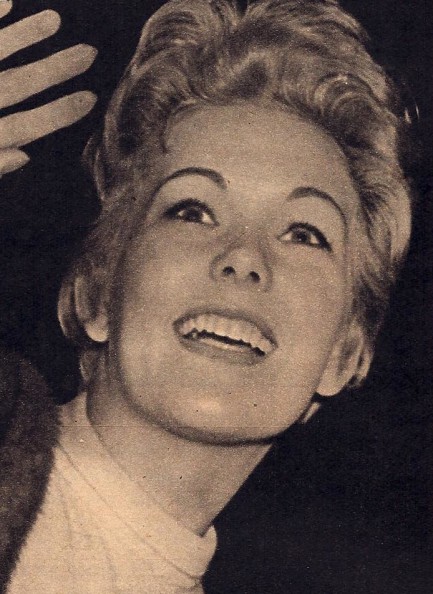
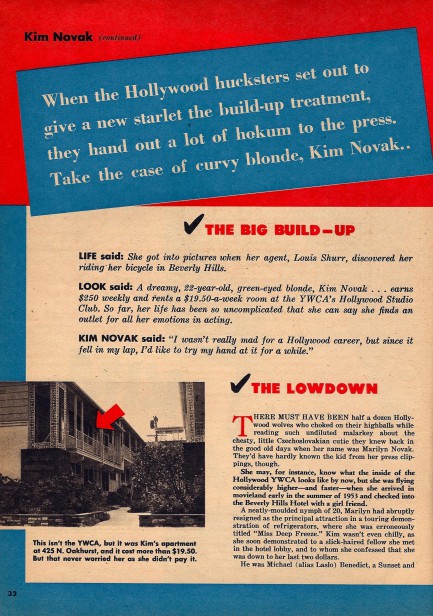
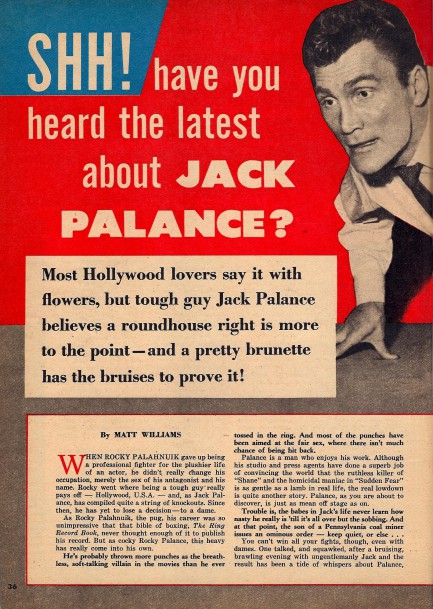
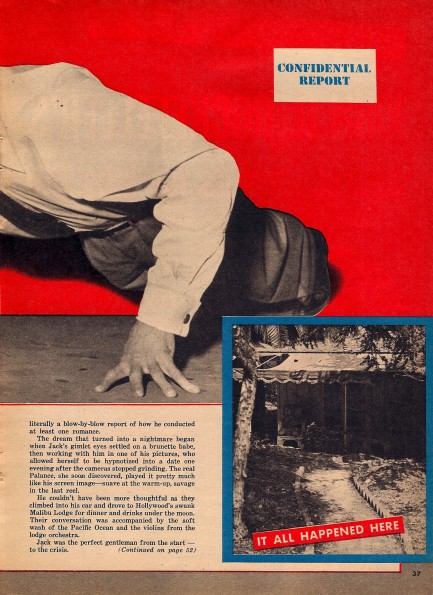
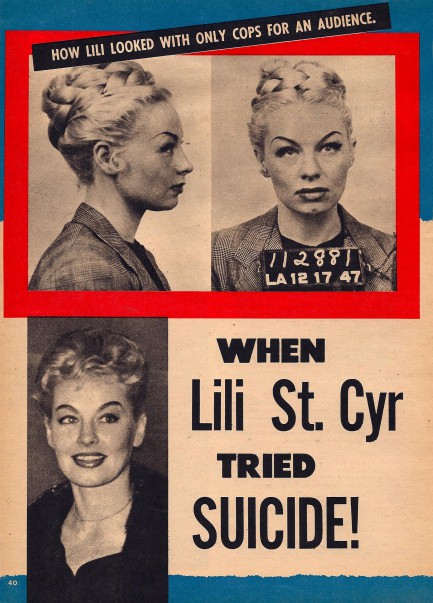
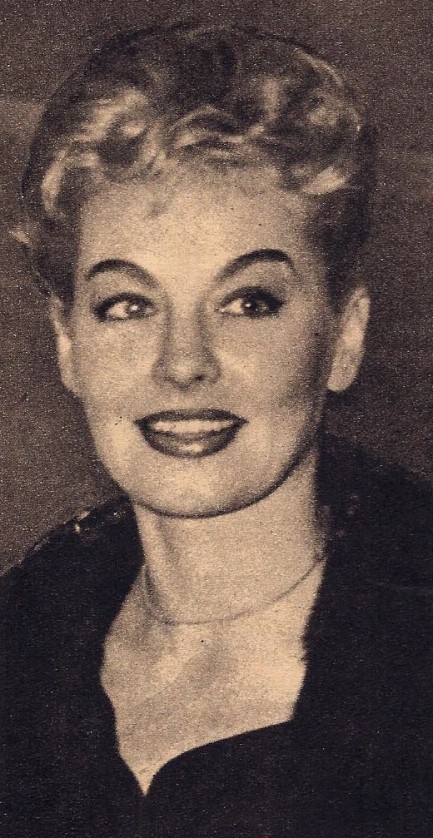
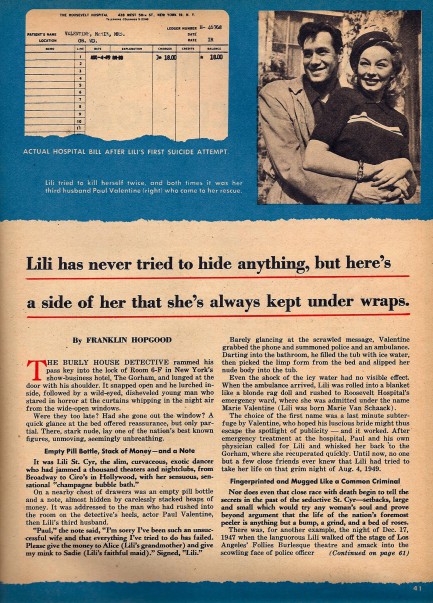
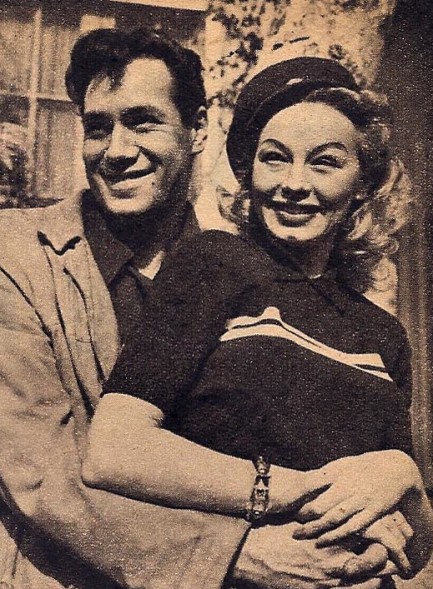
| Vintage Pulp | Dec 22 2015 |

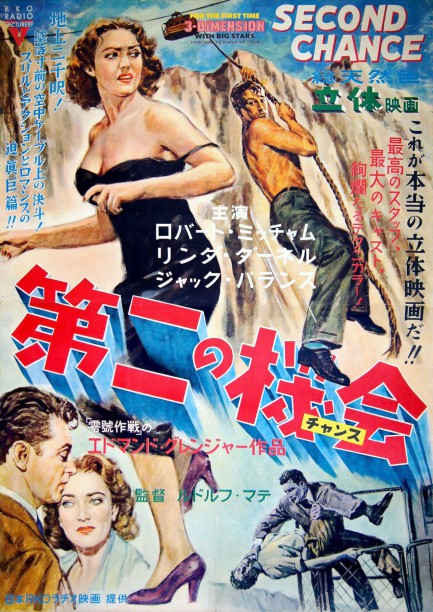
With a poster this amazing you’d expect a pretty good movie. It promotes the Japanese run of the thriller Second Chance, which opened there today in 1953 after premiering in the U.S. in July. The film is near impossible to find, but we already possessed a downloaded copy from years back because we long ago sought out all Robert Mitchum’s work due to his utter coolness. Second Chance has not only Mitchum, but the always excellent Linda Darnell, exteriors shot in the Mexican towns of Cuernavaca and Taxco, color film stock (which lost its vividness in the intervening decades), and a 3-D process (of course not replicated for the home viewer).
So, is it any good? Well, when technical innovations arrive in Hollywood, filmmakers often use them as gimmicks, with diminished regard for story flow and physical logic. You see the same phenomenon today with CGI. Because this was RKO Radio Pictures’ first 3-D movie, and it was in Technicolor, many scenes take advantage of those aspects, but fail to build characterization or advance the plot. So there you go. But the locations in hilly Taxco look great, the musical interludes are grandly staged, and it all climaxes with an extended cable car set piece where down-on-his-luck prizefighter Mitchum gets a chance at redemption by taking on hitman Jack Palance. We’ve seen better. But we’ve seen far worse.
